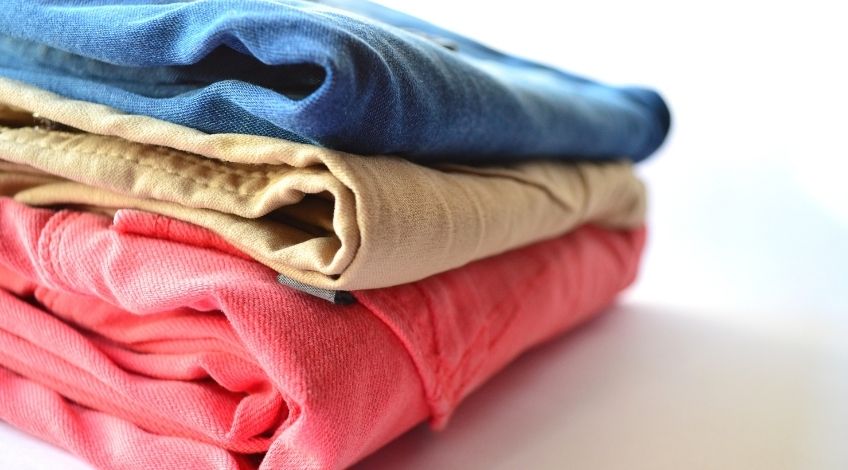
What Is A Heat Pump Dryer? (and how do they work)
More and more tumble dryers on sale in the UK are now heat pump tumble dryers. You might have seen that they cost more than other types of dryers but are they worth the extra cost?
In this article we’ll explain exactly what heat pump tumble dryers are, how they work and the benefits and disadvantages of buying one. Keep reading to find out all that you need to know about heat pump tumble dryers.
What Is A Heat Pump Tumble Dryer?
Heat pump tumble dryers look just like any other type of tumble dryer but with a few internal differences. Heat pump dryers work by absorbing the water from the laundry by forcing hot air through the drum.
The now moisture laden air then passes through an evaporator which removes the water which is stored in an on board water tank. The air is then reheated and pumped back through the drum to continue the drying process.
The air is continually reheated and reused until the laundry is dry. This is a different process to those used in either vented or condenser tumble dryers. Heat pump dryers are the only ones that reuse the hot air over and over which means they need less energy.
This is because the air is already fairly hot unlike in the other types of dryers which have to heat the air up before it can be used to dry clothes.
What Are The Pros & Cons Of A Heat Pump Tumble Dryer?
Let’s take a quick look at the pros & cons of a heat pump tumble dryer.
The Benefits Of A Heat Pump Tumble Dryer
The main benefits of using a heat pump tumble dryer include;
- Cheaper To Run
The heat pump technology reuses hot air already in the system. This reduces electricity consumption by at least 50%. - Can Be Placed Anywhere
Unlike vented dryers that need to be positioned near an outside wall, heat pump dryers can be placed anywhere. This is because the moisture removed from the clothes is stored in a tank on board. - Environmentally Friendly
As heat pump dryers use at least 50% less electricity compared to other tumble dryers, they have less impact on the environment. - Cause Less Damage To Clothes
Heat pump dryers operate at the lowest temperature of all tumble dryer types. This means there’s less chance of causing heat damage to your clothes.
The Disadvantages Of A Heat Pump Tumble Dryer
The main disadvantages of a heat pump tumble dryer include;
- Takes Longer To Dry Clothes
The average drying temperature of a tumble dryer is around 70 to 75 C. Heat pump dryers dry at 50 degrees C which is good for the fabric of your clothes, but does take considerably longer to get them dry. - Costs More To Buy
The purchase price of a heat pump tumble dryer has decreased considerably over the past few years, but they’re still substantially more expensive than condenser or vented tumble dryers. - Water Tank Needs Regular Emptying
Unlike vented dryers which expel the hot, damp air directly outside the home, heat pump dryers collect all of the moisture in an on board water tank. This tank will need to be emptied on a regular basis.
Do Heat Pump Tumble Dryers Need Special Installation?
The really good thing about heat pump tumble dryers is that they don’t need any special installation at all. Unlike vented dryers which need a vent hose, heat pump dryers need no special installation.
This allows you to put a heat pump tumble dryer anywhere that suits you. It doesn’t need to be placed near a water supply or drainage point and it doesn’t need to be placed by an outside wall.
Once delivered, heat pump tumble dryers are easy to install without almost any technical knowledge at all.
Having said that, there are some heat pump tumble dryers that have drainage pipes that need to be connected to your waste water system. These types have no on board water tank which eliminates the need for regular emptying.
How Are They Different From Regular Condenser Dryers?

Aside from the cost, the main difference between heat pump dryers and condenser dryers is in the way that heat pump dryers reuse air to dry your laundry.
Where a regular condenser dryer has to heat up the air to pass through the drum, a heat pump dryer reuses the same hot air over and over again. This makes a heat pump dryer at least 50% more energy efficient compared to a condenser dryer.
Are Heat Pump Tumble Dryers Worth It?
There’s no doubt that they’re much more efficient than the other types of tumble dryer which means they’re a lot better environmentally, and they’ll cost less to run too. Added to that, they’ll treat your clothes kinder due to the lower temperatures they use to dry clothes.
If those are things that are important to you, a heat pump dryer is definitely worth considering!
On the other hand, if getting your laundry dry as fast as possible takes priority, you might be better off getting a vented or regular condenser dryer, as you will notice the difference in time when drying in a heat pump dryer.
SEE ALSO: Different Types Of Tumble Dryers Explained – which is right for you?
Frequently Asked Questions
The disadvantages of a heat pump tumble dryer are they cost considerably more than other types of dryers, and they take a long time to get clothes dry.
The main difference between a heat pump tumble dryer and condenser or vented tumble dryers is the way the moist air extracted from the laundry is dealt with. In condenser or vented dryers that air is released from the system. In heat pump dryers, that hot air is reused over and over again. This reduces energy usage as the dryer doesn’t have to use so much energy heating the air that passes over the laundry.
The advantages of heat pump tumble dryers are they are cheaper to run, can be placed anywhere, kinder to clothes and environmentally friendly.




